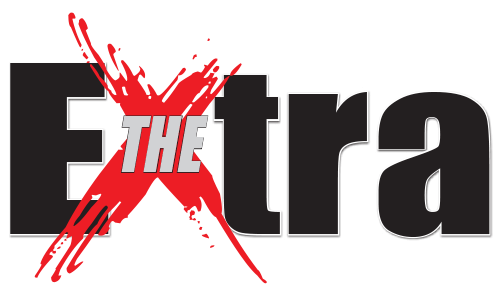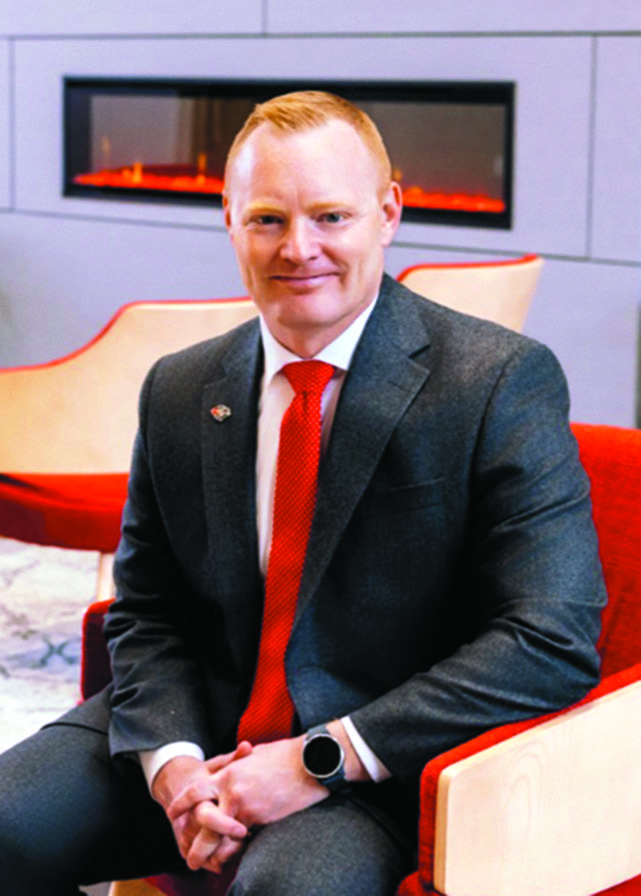Nancy Edmonds Hanson
After years of diminishing enrollment, Minnesota State University Moorhead is turning the corner. That’s good news not only on the 138-year-old campus, a staple of city life since 1887, but for Moorhead’s brightest high school graduates – who now can attend tuition-free.
Introduced in time for the past school year, the Moorhead Scholars program guarantees four years of affordable education to graduates of Moorhead High School who’ve maintained a 3.0 grade point average throughout their four years as Spuds.
During its first season in 2024-25, the brand-new Scholars program drew about 40 fresh MHS grads. This year, says the school’s vice president of strategic enrollment management, that number has already tripled last year’s total. Last year’s fall enrollment was 15% higher than the year before; the spring number, usually lower than at the start of the term, was up 8%. Total fall enrollment exceeded 4,000.
After two decades of diminishing enrollment, President Tim Downs and college leaders are pleased with signs the tide has turned. those inbound Dragons are turning the tide. In 1990, the university had the largest student body in Fargo-Moorhead – 9,151, compared to its Fargo rival NDSU with 8,780. But in the decades since then, that picture has changed. Throughout the 2000s, it remained in the 7,000s. It steadily declined over the next dozen years, dipping to just 3,700 in 2022.
Dr. Jason Trainer joined MSUM in early 2024 to take on the challenge of increasing enrollment. Of the Scholars program’s success, he says, “It’s going better than any of us could have imagined – maybe even too well, if that’s even possible. We’ve historically had between 40 and 45 Moorhead High graduates who choose to enroll. We’re currently on pace to triple that number.
“What’s also very exciting is what we have heard from families of underclassmen in the community. They’re saying it has pushed their students – motivating them to strive for those higher GPAs. As we invest in those honors-level students, students who have high ambitions to be impactful in their careers, I think this will snowball.”
He adds, “We’ve had a tremendous amount of outreach from other area k-12 systems that want to build similar programs and partnerships with us. Obviously, we have to be able to manage the financial piece. But we’re very excited about conversations that are happening with schools like DGF, Barnesville, Hawley and even Alexandria.”
The program is being funded through a combination of federal, state and institutional grants and scholarships.
Moorhead Scholars was introduced at the same time that the state of Minnesota debuted its North Star Promise. That statewide program covers both tuition and fees for new Minnesota students whose families earn $80,000 or less. At the same time, private Concordia College introduced its own Concordia Promise covering full tuition for students from any state with family income of $90,000 or less.
Trainer points out that the Moorhead Scholars approach, waiving tuition for local high-achieving graduates, is virtually unique among colleges in the region. Unlike the Promise programs, it doesn’t hinge on family income. Instead, it’s open to all based on their grades.
“We wanted to eliminate the income parameters because typically the families that are most negatively impacted by the cost of college are our middle-income families. They’re the ones that typically have the largest financial gaps. We wanted to move this away from need … really focus on getting our best students to stay in our community. We’re building the infrastructure around them.”
The infrastructure to which he refers includes two additional initiatives: the new Honors College and MSUM’s recently announced Institute of Applied AI (Artificial Intelligence). “We think we are building a talent pipeline in this area for generations to come,” he predicts.
The fledgling Honors College plan will enroll about one-quarter of MSUM’s students – the most ambitious from all disciplines, Trainer says. The goal is to create a community of those achievers: “We want them to be deep thinkers. We want them to be elite communicators. And we want them to move those skills into real-life solutions and be impactful leaders and doers.”
The Institute of Applied AI seeks not to develop artificial intelligence itself, but to find practical ways to apply it across all the college’s disciplines, from education and business to the arts. An initial project is designed to help future teachers find ways to better motivate seventh-graders in the classroom, testing and evaluating alternate approaches to find the most effective.
“MSUM’s recruiting focus won’t necessarily be on price, but instead on academic quality,” he explains. “We’re leveraging into the academic distinctiveness, the relevance, the outcomes that our students achieve. That’s what makes us different from competing institutions in our region.”
Citing the Moorhead Scholars program, he notes, “We’re very aggressive and very generous in terms of how we try to create our financial aid packages. But our focus is not on trying to make this the lowest cost education out there. We want to find even more ways to provide the very best academic experience for students who are serious about preparing for their careers.”




